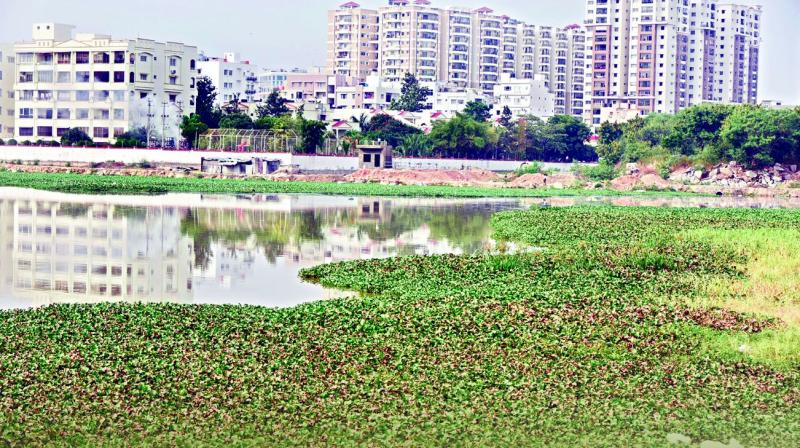Hyderabad: It will cost Rs 17 crore to clear water hyacinth

Hyderabad: It may look pretty with its thick glossy leaves and lavender pink flowers but the water hyacinth, a free-floating perennial aquatic plant native to the Amazon basin, is a highly troublesome and invasive species. The web of this plant problem is spreading fast in Hyderabad where the species is growing in 82 lakes, of which 53 are larger than five acres.
This is alarming because when not controlled, water hyacinths can spread across lakes and ponds completely, affecting water flow, blocking sunlight from reaching native aquatic plants, and reducing oxygen content in the water. Over time, it can create prime habitats for mosquitoes.
GHMC is working to tackle the growth in bigger lakes, and is allocating the smaller ones to various agencies. But the neglect by civic authorities and no responsibility by the locals will cost the GHMC dear — the tentative cost for removal of water hyacinth in 53 lakes has been pegged at Rs 17 crore. The average cost of carting the removed weed to the nearby quarry is Rs 36,750 per acre and the cost of maintenance for one year has been calculated at Rs 16 crore per acre.
Dr C. Srinivasulu, assistant professor, zoology wing, Osmania University, explained this spread of water hyacinth. “When sewerage contamination reaches water bodies, it increases nutrient levels in the water. This encourages growth of aquatic plants. The water hyacinth is a floating aquatic microphyte that grows rapidly in sewage contaminated or eutrophic lakes. It steals nutrition needed by other submerged plants and micro-organisms. The thick weed cover obstructs the penetration of sunlight into the lake’s ecosystem, affecting ecological balance,” he said.
Troublesome weed
- Water hyacinth (Eichhornia crassipes) is a troublesome aquatic weed and has spread in almost all lakes in Greater Hyderabad.
- The weeds can reduce the speed and quantity of flow of water, thereby increasing the possibility of flooding nearby areas.
- The weed can deplete aquatic biodiversity — killing off and inhibiting free breeding. It can also affect migration patterns.
- The weed changes water chemistry by reducing its levels of oxygen leading to suffocation and eventual death of other living organisms, including fish.
- The weeds become breeding places formosquitoes. Hence, diseases such as malaria, encephalitis, filariasis and cholera are encouraged.
- It renders lakes completely useless for recreational purposes too and affects urban infrastructure.

